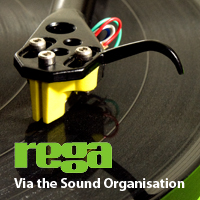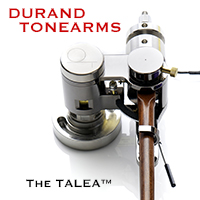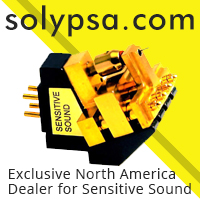The Boulder 1008 Phono Preamplifier
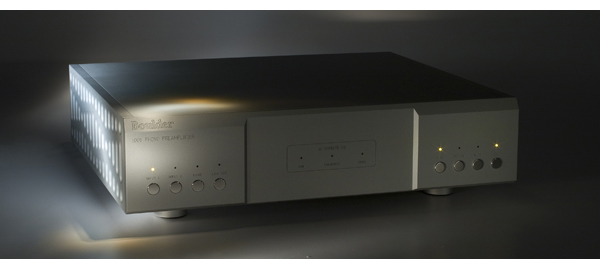 Introduced in 2002, the Boulder 2008 phono preamplifier caused quite a stir and was considered the top of the analog mountain by many. With three inputs and variable EQ options for older recordings, it left no bases uncovered. It still remains king to many people, but at $33,500 out of reach for all but the most well heeled audiophiles.
Introduced in 2002, the Boulder 2008 phono preamplifier caused quite a stir and was considered the top of the analog mountain by many. With three inputs and variable EQ options for older recordings, it left no bases uncovered. It still remains king to many people, but at $33,500 out of reach for all but the most well heeled audiophiles.
In November of 2009, Boulder announced their 1008 phono stage at a price point of $12,000. While not a budget component by any means, the 1008 is on par with similar offerings from ARC, Aesthetix and a number of other players in the $10K realm. Utilizing a lot of the technology from the 2008, it features a single chassis design and only two inputs, with the additional EQ functions already built in. The low cut filter only has a 20hz option (where the 2008 is switchable between 5hz, 10hz and 20hz), but the 1008 is still balanced from input to output. In addition to the EQ and low filter selectors, there is also a mono button on the front panel for use with mono recordings. The Boulder 1008 is ready for anything you can throw at it, if it’s on vinyl.
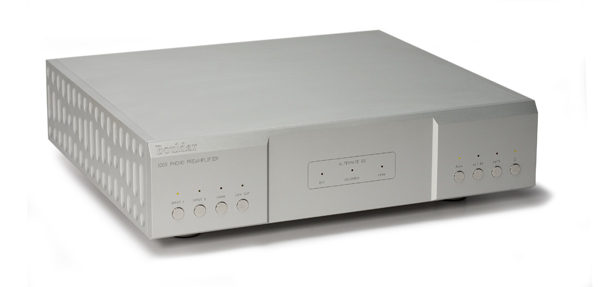 A peek inside the box reveals Boulder’s meticulous construction and outside, their flawless casework. Though light by Boulder standards at 32 pounds, the 1008 is a bit more manageable than it’s larger brother, but equally potent. (And it still weighs as much as some power amplifiers I’ve reviewed.) A one-chassis design, the 1008 still features dual mono construction throughout and heavy duty shielding on the power transformer to isolate it from the rest of the circuitry. Thanks to 70db of gain, and a noise floor that redefines quiet, you should be able to use any phono cartridge available, no matter how low the output with no issue. The MM input features 44db of gain, and allows for adjusting the capacitive load as well, so the 1008 is infinitely configurable to suit your needs.
A peek inside the box reveals Boulder’s meticulous construction and outside, their flawless casework. Though light by Boulder standards at 32 pounds, the 1008 is a bit more manageable than it’s larger brother, but equally potent. (And it still weighs as much as some power amplifiers I’ve reviewed.) A one-chassis design, the 1008 still features dual mono construction throughout and heavy duty shielding on the power transformer to isolate it from the rest of the circuitry. Thanks to 70db of gain, and a noise floor that redefines quiet, you should be able to use any phono cartridge available, no matter how low the output with no issue. The MM input features 44db of gain, and allows for adjusting the capacitive load as well, so the 1008 is infinitely configurable to suit your needs.
The 1008 offers two pairs of balanced outputs as well, so that the 1008 can not only run into your linestage, but the second set of outputs can drive your choice of recording device. I used the 1008 with my J-Corder/Technics RS-1500 open reel deck and made some superlative copies of my favorite analog tracks. At 15 i.p.s., the result was dead quiet, capturing almost all of the magic of the original. Digital captures with the Nagra LB were also fantastic, going from balanced out of the Boulder into the balanced inputs of the Nagra and this has proven a great way to get more of my vinyl collection into my Sooloos digital music server.
Setup
Operating the 1008 is very straightforward, thanks to Boulder’s well-written and illustrated instruction manual. I wish more manufacturers’ would follow their lead, offering some decent color photos. I have no bigger pet peeve in the audio world than purchasing a component with a five-figure price tag that has a cryptic instruction manual.
As my review sample came straight from booth duty at this years’ Consumer Electronics Show, it did have some hours on the clock, and while it sounded fantastic out of the box, did continue to improve for the next 100 hours or so.
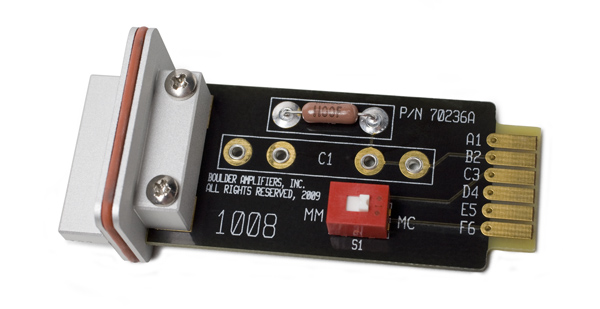 Other than placing the 1008 on my rack and plugging it in to a Running Springs Dmitri power conditioner (with Shunyata Python CX power cord, as all of my other low level components are), the only setup necessary was changing the loading on input two to low gain via a switch and unsoldering the 100 ohm resistor from the removable “personality card”, so that I could investigate the moving magnet and moving iron cartridges in my collection from Clearaudio, Grado and Soundsmith. The other cartridges used on input one were the Lyra Skala, Dynavector XV-1s and the ZYX Omega, reviewed in issue 28 of TONEAudio. I briefly auditioned the Clearaudio DaVinci, but found its slightly forward presentation not to my liking with the 1008.
Other than placing the 1008 on my rack and plugging it in to a Running Springs Dmitri power conditioner (with Shunyata Python CX power cord, as all of my other low level components are), the only setup necessary was changing the loading on input two to low gain via a switch and unsoldering the 100 ohm resistor from the removable “personality card”, so that I could investigate the moving magnet and moving iron cartridges in my collection from Clearaudio, Grado and Soundsmith. The other cartridges used on input one were the Lyra Skala, Dynavector XV-1s and the ZYX Omega, reviewed in issue 28 of TONEAudio. I briefly auditioned the Clearaudio DaVinci, but found its slightly forward presentation not to my liking with the 1008.
Because the inputs of the 1008 are also balanced, it is to your advantage if you can have your favorite tonearm cable re-wired to a balanced configuration. Like headphones, a phono cartridge can be connected in a true balanced configuration, and though I had excellent results with the supplied Boulder XLR>RCA adapters, (you must use the Boulder adapters to keep phase correct on the inputs), going all balanced offered even a little more “blackness” to the backgrounds.
Massive, like a boulder
Boulder electronics are known for dynamics and resolution, and the 1008 is worthy of the name on the front panel. Not expecting much out of the Boulder, five minutes out of the box, still (literally) ice cold from the UPS truck, I had just thrown a copy of Supertramp’s Crime of the Century on the Raven TWO with the ZYX cartridge. I was not prepared for what I was about to hear; while the volume was down fairly far for the opening track, I cranked up the volume somewhat and the first sax blast on “Bloody Well Right” set me back in the couch. With dynamics like this on a garden variety album, I couldn’t wait to get some hours on the clock to really see what the 1008 was capable of.
Though the larger Boulder phono stage, the 2008 is held in awe by most people, reviewers and mere mortals alike, I’ve never been fortunate enough to get a great demo of this piece, so I had no preconceived notions with the 1008. However, once it was on continuously for a few days, it just kept opening up further for another week.
Where my reference Nagra VPS/VFS with Red Wine Audio Black Lightening is no slouch, and with accessories approaches the price of the Boulder, I firmly believe they will appeal to different listeners. Even with the battery supply, the Nagra gets to about 95% black in backgrounds but the Boulder goes slightly further. When listening to large-scale classical music, this preamp really has a lot of grunt.
Much like a race car with massive brakes, what surprised me about the 1008 was it’s ability to stop on a dime. It handles the swing of a kettle drum perfectly, reproducing just the right amount of air and resonance after the strike, yet coming directly to a full stop without sounding bloated. As my knowledge of classical music is mostly confined to the tried and true warhorses, I won’t bore you with my selections, but suffice to say that tonality is spot on with the 1008 and that should you purchase one of these, you will not be disappointed.
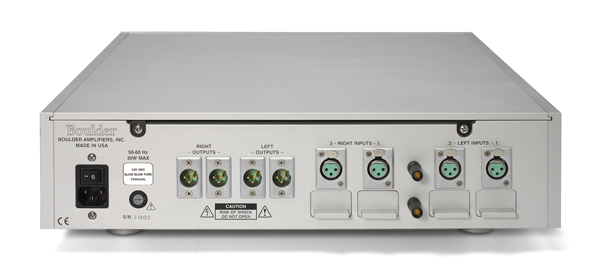 Moving back into my comfort zone, I revisited the Supertramp album that I began my evaluation with and was impressed at how much bigger the sound had grown in all three dimensions, very impressive. Next stop, the recent remasters of the Kraftwerk catalog. The driving beats in Tour De France were pounding, and at extremely high level, starting to shake my building. Thanks to that 20hz low pass filter, I was able to drive my system to discothèque levels without a hint of feedback. This also came in handy with moderately warped records. With a system that extends to 20hz, recorded anomalies that were not a problem when my system bottomed out at around 30hz now are front and center. The filter worked well without diminishing the subterranean bass drive of the system.
Moving back into my comfort zone, I revisited the Supertramp album that I began my evaluation with and was impressed at how much bigger the sound had grown in all three dimensions, very impressive. Next stop, the recent remasters of the Kraftwerk catalog. The driving beats in Tour De France were pounding, and at extremely high level, starting to shake my building. Thanks to that 20hz low pass filter, I was able to drive my system to discothèque levels without a hint of feedback. This also came in handy with moderately warped records. With a system that extends to 20hz, recorded anomalies that were not a problem when my system bottomed out at around 30hz now are front and center. The filter worked well without diminishing the subterranean bass drive of the system.
Yet light as a feather
I’ve noticed that some gear capable of tremendous dynamic swings can sacrifice weight for detail. While this can be very exciting in the initial listening sessions shortly after bringing said gear home from the dealer, it can soon become exhausting if not outright annoying.
This is another area that the 1008 does not disappoint. Good out of the box, once fully broken in and stabilized, I was always surprised at how much low level detail and low level texture was always on tap. Interestingly, this is what had me listening to more classical and acoustic music for this review than in many of my past articles. That extra bit of resolution on tap just made classical music so much more enjoyable, that I found myself actually buying some new classical albums to listen to during the review period!
The 1008 was also able to recreate an uncanny sense of height when listening, and this is one of the toughest things for a system to get right, or even achieve at all. When switching back to the EAR 834P (one of my favorite affordable phono stages), everything just seemed to line up laterally, with all energy coming from the soundstage at the same height. I noticed this very distinctly while listening to Steve Earle’s Townes LP. Instantly upon switching from the EAR to the Boulder, not only did each instrument get it’s own, very distinct space, the banjo felt as if it was slightly higher off the ground than the guitar and Earle’s voice was placed right between the two.
Of course, the Boulder costs almost ten times more than the EAR, but the point is that this 12 thousand dollar phono stage is not a case of spending a lot of extra money, only to get a fancy case and a modest improvement in sound. The improvement is huge. If the rest of your system is up to the task, the Boulder will offer performance concurrent with its price tag.
The 1008’s tonal balance is as near perfect as I’ve had the chance to experience. Where my reference Nagra adds just the slightest drop of body to the sound (not that that’s a bad thing for 99% of my record collection), the Boulder neither adds nor subtracts anything. At the same time it does not commit the ultimate audiophile sin in my book of overdamping everything at the expense of transient attack. Acoustic bass sounded just right, and electric bass had the right amount of bounce. While some may describe this as clinical, I prefer to call it neutral. Again, if you’d like a drop of warmth that can certainly be adjusted by your choice of cartridge.
Additional functionality
If you are using a high-end MM cartridge or a Moving Iron cartridge from Grado or the Soundsmith, the 1008, will extract every bit of detail the cartridge is capable of. I happened to have all three on hand and was amazed at how much these cartridges were able to deliver. My current favorite, the Clearaudio Maestro Wood, mounted on the Technics SL-1200 with Sound HiFi mods and SME 309 arm consistently amazed listeners with its big sound through the Boulder preamp. What’s the point of having a second phono input if you don’t take advantage of it?
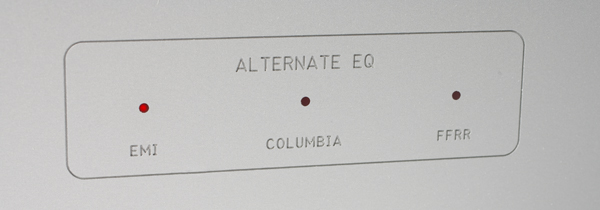 Boulder rounds off their design with a few extra touches that make the 1008 a great choice for the real vinyl connoisseur. There is a separate EQ selector for early Columbia and EMI records as well as the early Decca ffrr recordings. While I don’t have many of these records in my collection at present, should the 1008 become part of my reference system, I would no longer shy away from them in the future.
Boulder rounds off their design with a few extra touches that make the 1008 a great choice for the real vinyl connoisseur. There is a separate EQ selector for early Columbia and EMI records as well as the early Decca ffrr recordings. While I don’t have many of these records in my collection at present, should the 1008 become part of my reference system, I would no longer shy away from them in the future.
Conclusion
The Boulder 1008 does everything right and nothing wrong. If you think you need vacuum tubes to get depth and delicacy in a top shelf phono stage, think again. You can say goodbye to tubes forever and not miss a molecule of music with the 1008. In anything but an extremely forward sounding system and all but the most harsh phono cartridges, it should be a perfect match. Personally, I think those of you in the audience with a cartridge on the slightly warm side of the tonality equation (DV XV-1s, Koetsu RSP, ZYX Omega, etc) will be in vinyl heaven, able to get the body you are used to, with an extra dose of slam and dynamics thrown in for good measure.
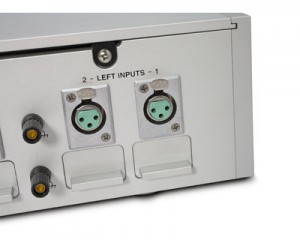 For the vinyl enthusiast that dreams of owning a Continuum table and Boulder 2008 phono preamp, but will never be able to scratch together $200k, trust me, combine the Boulder 1008 with your favorite $25k table, arm and cartridge and go to bed with a big smile on your face.
For the vinyl enthusiast that dreams of owning a Continuum table and Boulder 2008 phono preamp, but will never be able to scratch together $200k, trust me, combine the Boulder 1008 with your favorite $25k table, arm and cartridge and go to bed with a big smile on your face.
The Boulder 1008
MSRP: $12,000
Manufacturer: Boulder Amplifiers www.boulderamp.com
Peripherals
Turntables Spiral Groove SG-2 w/Triplanar, TW Acustic Raven Two with SME iV.Vi and SME 309 arms, Acoustic Signature Analog One Mk. III with SME iV.Vi arm, Technics SL-1200 (with Sound HiFi mods) and SME 309 arm
Cartridges ZYX Omega, Lyra Skala, Clearaudio DaVinci, Dynavector XV-1s and 17D3, Sumiko Blackbird, Grado Statement, Soundsmith “The Voice”, Clearaudio Maestro Wood
Preamplifier Burmester 011
Power Amplifier Burmester 911 MK.3
Digital Source DCS Paganini stack
Speakers GamuT S-9
Cable Shunyata Aurora (interconnect), Shunyata Stratos SP (speakers), Furutech Silver Arrow and AG-12 (tonearm)
Power Running Springs Dmitri and Maxim power conditioners, RSA HZ and Mongoose power cords, Shunyata Python CX power cords





